News by
Firstpost on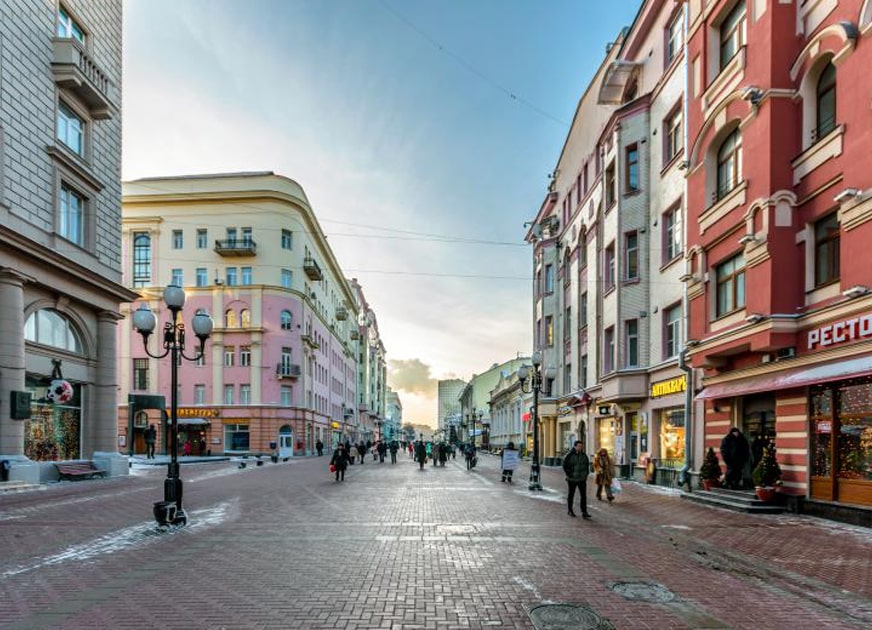
Moscow is not a city to visit only once; one is drawn to it again and again. Unlike the great capitals of Europe, such as Paris and Prague, it is not teeming with tourists and the people one sees on the streets are mainly locals. On one’s first visit, it is best to get over with the sights like the Kremlin Armoury Museum with its Fabergé eggs, St Basil’s Cathedral and its onion domes, and the works in the old and new Tretyakov Galleries, from the icons of Andrei Rublev to the modernist masterpieces of Kandinsky and Malevich.
From the second visit onward, what one should do in Moscow is to simply loaf about.
The best thing about Moscow is its Metro system, and it is inexpensive. I had always presumed that public transport would be affordable everywhere until I visited London and Paris; you really have to think before travelling on the metro. In London, the benevolent Jamaican at the ticket booth actually advised me to do some thinking (“You sure you want this, man? Think about it.”), but in Moscow you can do a single trip of any distance, even changing trains for RUB 55 (about Rs 60). Catching a train is no issue, since there is one on each route every half minute, and there is usually sitting place (except during peak hours). Some of the stations are decorated magnificently with statues and art, well worth an excursion on their own.
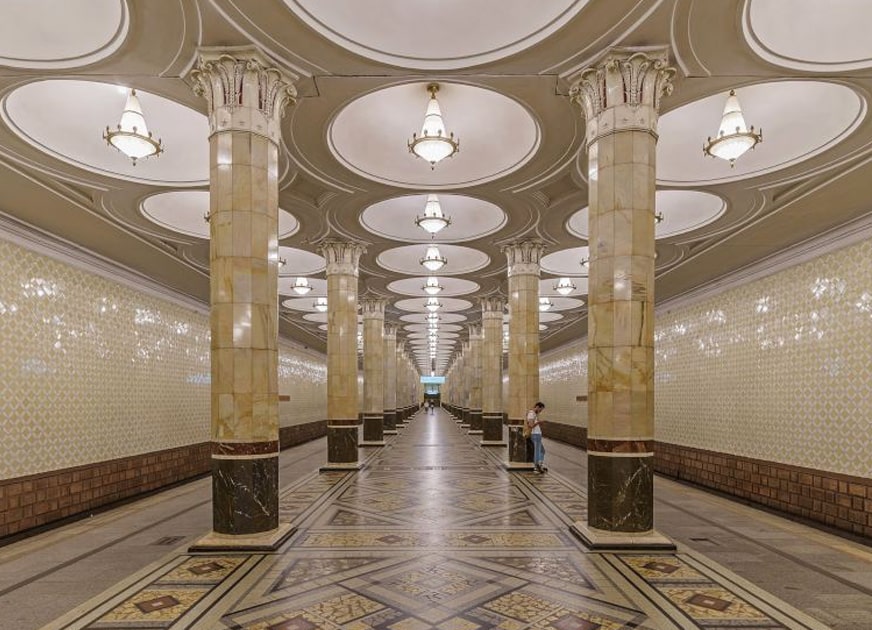
Once you’ve got tourist attractions out of the way, the remaining activities are mainly eating, drinking and walking around. The best place to hang out in Moscow is in the city centre in the vicinity of the Kremlin or near about Arbat Street. This part of Moscow is expensive to stay in and it’s cheaper to stay in the outskirts close to a metro station. The first time I was in Moscow, it was with a friend and we stayed close to the metro station Botanichesky Sad. We had been warned not to stay out late at night, which meant that we had dinner at the hotel. The restaurant was deserted but two inebriated Russians sitting at the next table wanted us to ‘drink Russian Vodka’ – and go on drinking it! To make matters more alarming they were off-duty policemen and I made the error, when the uncertain conversation commenced, of bringing the subject around to cinema. Denis, the younger of the two, said Avatar was the best film he had ever seen and I foolishly responded by naming the Russian film Cargo 200 as my own favourite. This made Denis wild with fury and I recollected with horror that the protagonist of that film had been a murderous policeman! I can honestly say that we escaped with only a group picture inflicted on us because of the other man Evgeny, who was peaceable and also more sober.
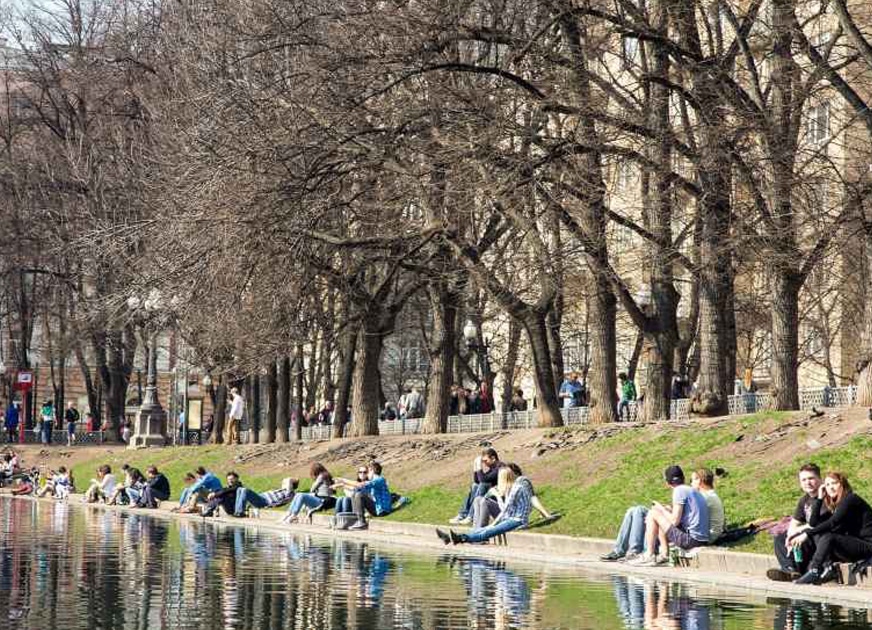
This time in Moscow I was on a work trip and was therefore put up at a more expensive hotel in the city centre. Patriarch Ponds – where Bulgakov’s novel The Master and Margarita (1940) begins, was only a stone’s throw away. It being spring, pieces of ice were still floating but the ducks were swimming about and being fed. When I was returning to the hotel, a Muscovite stopped me to ask where I was from. From there on, we got taking about the pros and cons of being Russian, how they were different from Europeans, and so on; his name was Vladimir and he lived in an apartment on the other side of the road. He also asked if I was Jewish and I learned later that it could have been on account of my nose.
Being approached by people is a fairly common experience in Russia, and in St Petersburg a complete stranger once stopped us and wanted a translation of some old Hindi songs into English. The man was apparently an unemployed ship building engineer, earning his livelihood giving English lessons. He had a quaint way of speaking and prefixed every sentence with ‘My esteemed friends and honourable colleagues’. Since he had time on his hands, he volunteered to escort us to the apartment once occupied by Dostoyevsky. He had bought a daily metro pass and could afford to accompany us indefinitely without having to buy tickets.
Vodka and beer are cheap if bought in a shop (a bottle of good vodka might cost as little as RUB 300) but more expensive in an average restaurant – especially in the city centre, but it would still add up only to the cost in India in a fairly upmarket restaurant. In a pub I walked into in Moscow the man at the counter said ‘three thousand’ for a glass of stout and then corrected it to ‘three hundred’ after the resulting laughter. Russians smoke an enormous amount and evidence could be seen on the pavement outside. A short distance from the pub (and on Tverskaya Street) is a small showroom of Imperial Porcelain, the best known manufacturers of fine chinaware in Russia. I stepped inside without an intention of making any purchases, since fine porcelain is prohibitively expensive, but what I saw was much too tempting. This is a strategy shopkeepers can try out: If they are selling exquisite stuff that is also expensive, they should also exhibit smaller objects less dear, alongside. There seems to be some kind of emotional transference operating here — people who can’t afford the expensive stuff end up acquiring the smaller items, as if to compensate. I myself bought a couple of porcelain rabbits.
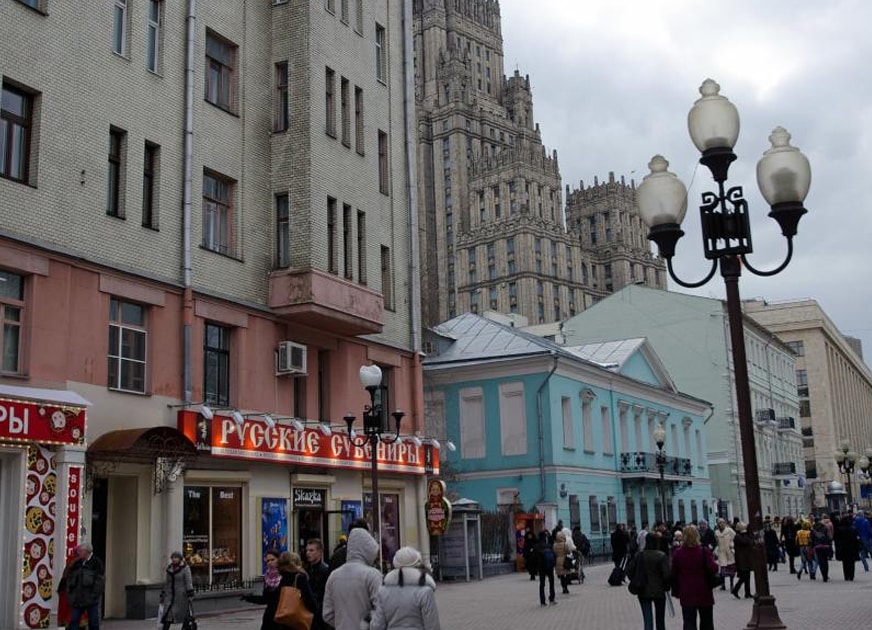
Shopping in Moscow usually implies the Glávnyj Universáľnyj Magazín (GUM), which faces the Red Square, the main department store where you can get all brands and which also houses a large number of restaurants of various kinds. It was once the official state departmental store but is now apparently in private hands. The Tsentralʹnyĭ Universalʹnyĭ Magazin (TsUm) is a high-end department store meant for apparel and fashion accessories. Arbat Street is another public favourite, since it is a paved walkway meant only for pedestrians. Arbat is a great place for books as well as art and it is where people look for souvenirs like Matryoshka dolls – a series of wooden dolls representing peasant women, one inside the other.
But my own preferences go much lower and I prefer the flea markets, although they are open only on weekends. There are two of them, and the more spectacular of the two is called Market Levsha (established in 1824), 30 kilometres from Moscow, not accessible by metro. You need to take the suburban train from the Leningradsky Railway station to the station of Novopodrezkovo. The flea market is located just beside the railway station and occupies several acres. The Russian government prohibits the export of items older than a hundred years, and you have to be careful about what you buy. In most ‘flea markets’ around the world, wily professionals have stepped in and either the prices are exorbitant (as in Paris) or (as in China) they fool you with fake memorabilia. Getting back from Levsha in a bus can be an experience as I discovered one Sunday. The buses are infrequent and nearly as crowded as a Mumbai suburban train on a working day. The conductor couldn’t even make it through the bus and had to use both doors, and I nearly got stuck in one. Carrying fragile glassware back made the trip doubly worrisome. But rather than getting angry at having my elbow in their faces, the passengers accommodated my bag under a seat; the hour and a quarter back to the Moscow metro was not unbearable, though I was twisted into helical shape.
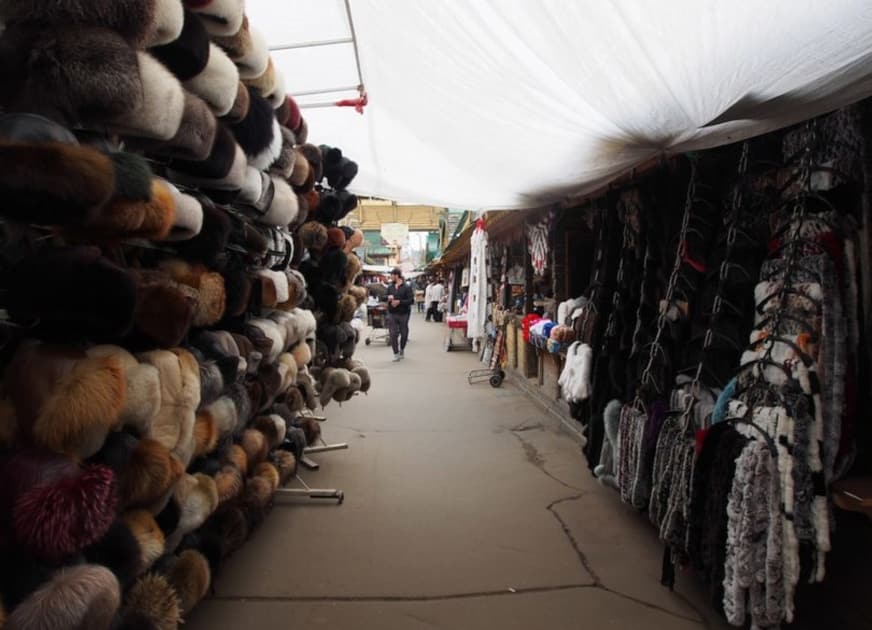
The other flea market is not nearly as good as Levsha, but it is easily reached. Izmailovsky market is within walking distance of the Partizanskaya metro. It is organised around a kitschy castle popularly called the Izmailovsky Kremlin, and the flea market is open from around 9 am on weekends. Rather than say what can be found in a Russian flea market, it is easier to say what can’t be since the contents of the stalls are so varied and indescribable. But the key thing is that they are not tourist traps but genuinely convey a sense of Russian households in the past century or more. I got an icon of the Madonna and the infant Jesus at Izmailovsky market that must be several decades old. Being rather sticky and smelling of some kind of oil, I tried to clean it with Russian vodka but the stickiness would not go. When I checked it out on Google, I discovered that icons were traditionally soaked in boiled linseed oil to protect them; sticky is how the icon of the Madonna and the infant Jesus has hence remained.
On my last night in Moscow, my Russian friend Eugene took me to a Georgian restaurant located in a basement close to the Red Square named ‘Khinkalnaya’. Russia food is good, but Georgian food is among the best. Georgians also drink a kind of grape vodka – distilled from the grape residue after making wine – called ‘chacha’ that does not taste like spirit the way vodka does, but has a distinctive flavour. Eugene also introduced me to red bean soup and Khinkali dumplings. On my next trip to Moscow, I’ll be sure to visit it again.
Comments
Add comment